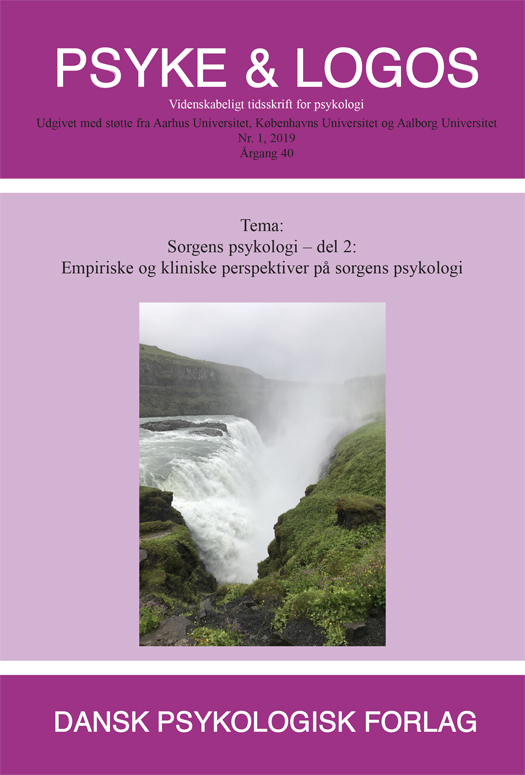Symptoms of prolonged grief disorder in bereaved partners
Frequency and risk factors
DOI:
https://doi.org/10.7146/pl.v40i1.115080Keywords:
Prolonged Grief Disorder, PGD, Grief, bereaved partners, Risk factors, FrequencyAbstract
The loss of a spouse causes a painful, but natural, grieving process. However, a significant minority of bereaved partners develops symptoms of prolonged grief disorder (PGD). This is especially common in people who lose their partner after a long and difficult period of illness, as is often the case with patients in specialized palliative care. This project investigated frequency and risk factors of symptoms of PGD in bereaved partners of patients who prior to their deaths received specialized palliative care from Palliative Team Funen, Odense University Hospital. Participants (N=182) completed questionnaires at respectively three and seven months post-loss. Analyses showed that three months after the loss, 55% of participants showed an increased symptom-level of PGD (score ≥29 on PG-13), while the frequency had decreased to 36% seven months after the loss. In addition, we found that female sex, a low degree of positive affect and a high degree of orientation towards the loss after three months were statistically significant risk factors for symptoms of PGD seven months after the loss. The results confirm that bereaved partners to patients with a complicated course of disease requiring specialized palliative efforts are at high risk of developing symptoms of PGD. Health care services should pay special attention to providing adequate support for this population.
Downloads
Published
How to Cite
Issue
Section
License
Ophavsret er tidsskriftets og forfatternes. Det er gældende praksis, at artikler publiceret i Psyke & Logos, som efterfølgende oversættes til andet sprog, af forfatteren frit kan publiceres i internationale tidsskrifter, dog således at det ved reference fremgår, at den oversatte artikel har et forlæg i en dansksproget version i Psyke & Logos. Artikler kan frit deles og linkes til på forsknings- og undervisningsnetværk (så som Blackboard). Link foretrækkes, fordi det giver oplysning om brug af tidsskriftets artikler.




